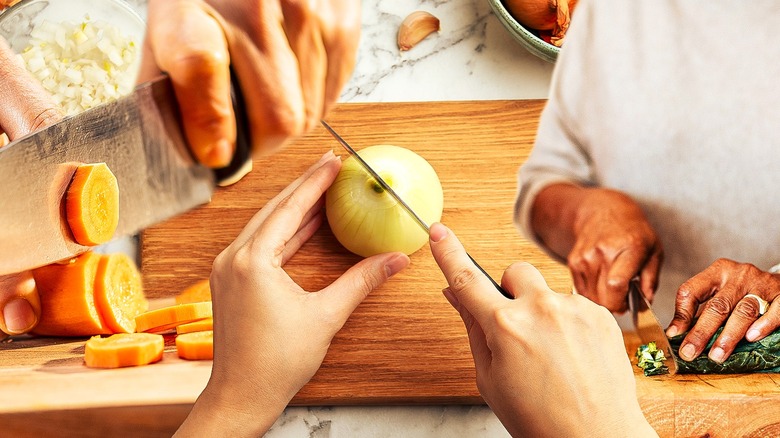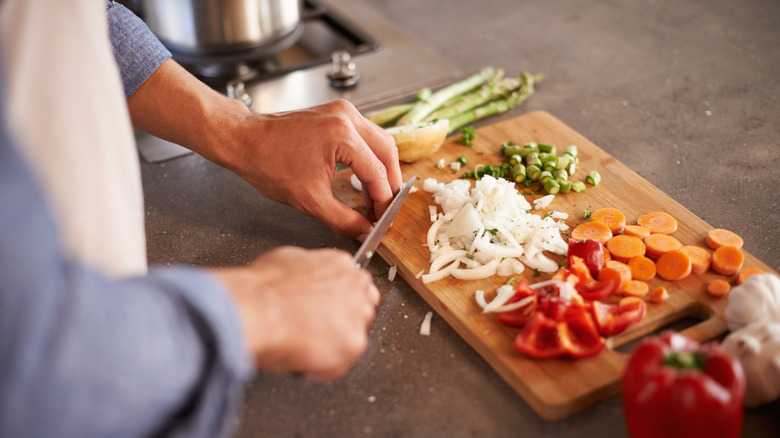Kitchen professionals know the importance of maintaining their tools with care. One of the best ways to prolong the life of your wooden cutting board is by using cutting board butter. In this article, we will dive deep into how to make cutting board butter, the benefits it brings, and some valuable tips for those who take pride in their culinary equipment.
Initially, you might wonder why wood care is as crucial as the cooking process itself. However, a well-maintained wooden board can not only enhance the aesthetic of your kitchen but also help prevent bacterial growth and cracks. Understanding how to make cutting board butter is the first step towards achieving outstanding maintenance.

What is Cutting Board Butter?
Cutting board butter, often referred to as wood conditioner, is a blend of food-safe mineral oils and waxes. This mixture moisturizes the wood, preventing it from drying out and cracking. Using this butter is simple yet effective, making it a must-have for any professional kitchen.
Ingredients for Making Cutting Board Butter
You need just a few ingredients to prepare your own homemade cutting board butter.
- Food-grade mineral oil: This serves as the base of your cutting board butter.
- Beeswax: Adds a layer of protection to your cutting board, sealing in moisture.
- Carnauba wax (optional): For extra shine and durability.
Step-by-Step Instructions for Making Cutting Board Butter
Now that you know the essential ingredients, let's dive into the actual process of how to make cutting board butter.
- Gather Supplies: Start with food-grade mineral oil (1 cup), beeswax (1/4 cup), and carnauba wax (2 tablespoons if using).
- Melt the Waxes: In a double boiler, melt the beeswax and carnauba wax until fully liquefied.
- Add Mineral Oil: Slowly mix in the mineral oil while stirring to create a homogenous blend.
- Cool and Store: Pour your combination into a glass jar and allow it to cool before sealing.
And voila! You have just crafted your very own cutting board butter.
How to Apply Cutting Board Butter
Now that your cutting board butter is ready, applying it is straightforward. Follow these steps for optimal results:
- Ensure your cutting board is clean and completely dry.
- Using a soft cloth or paper towel, apply a generous amount of cutting board butter to the surface.
- Rub it in evenly, following the grain of the wood.
- Allow it to soak in for at least 20 minutes, preferably overnight.
- Wipe off any excess with a clean cloth.
For best results, apply cutting board butter every month or whenever your board appears to be drying out.
The Benefits of Using Cutting Board Butter
Maintaining your cutting board with butter has numerous advantages. Here are a few:
- Prevents Cracking: Regular application moisturizes the wood, reducing the likelihood of cracks.
- Reduces Bacterial Growth: A well-conditioned surface is less prone to harbor bacteria, thus ensuring food safety, as outlined in this resource.
- Enhances Appearance: Cutting board butter revitalizes the natural luster of the wood, making it a visual centerpiece.

Frequently Asked Questions
How often should I apply cutting board butter?
It is advisable to apply cutting board butter every month or when your board shows signs of drying.
Can I use olive oil for cutting boards?
It is generally recommended to avoid olive oil, as it can turn rancid over time, leading to unwanted smells or tastes.
Is cutting board butter safe for food contact?
Yes, as long as you use food-safe mineral oil and beeswax, your cutting board butter is safe for food contact.
Additional Tips for Maintaining Cutting Boards
While cutting board butter is essential, there are additional tips to ensure longevity:
- Always wash wood boards with mild soap and water, and avoid soaking them.
- To read more on keeping your wooden cutting board clean, check out this guide.
- For new boards, consider seasoning them before use with a similar process of applying cutting board butter.
- Refer to this article for insights on wood versus plastic cutting boards.
Maintaining your tools means you can focus entirely on the culinary creations at hand. Understanding how to make cutting board butter is a fundamental aspect of such maintenance.
As an Amazon Associate, I earn from qualifying purchases.


























